While you could say that urban wineries are having their moment, sprouting up all across the country, urban vineyards remain extremely rare. An urban winery buys their grapes from vineyards in familiar locales – Brooklyn Winery, who we profiled, buys grapes from the Finger Lakes and the North Fork here in New York, and Sonoma, Napa, Lodi and Mendocino in California – and imports them to a winemaking facility in the city. An urban vineyard actually grows its own grapes, in the city proper.
If you’re wondering why urban vineyards fell out of favor centuries ago, the answers are what you’d expect: ever more expensive land, poor soil, and soot filled air. These reasons, and many other factors unique to each city where vineyards used to prosper, are enough to deter all but a handful of people from growing wine in the hearts of great cities today. And yet some do. As craft and farm-to-table movements continue to grow in popularity, the appeal of the urban vineyard is rising. Many of these urban vineyards, tucked away in some of the world’s most famous cities, were recently built (or rebuilt), while others have survived for centuries, as urban sprawl has penned them in. They’re all beautiful, fascinating testaments to the lengths we’ll go to grow wine.
Montmartre, Paris – Clos Montmartre
Montmartre is home to what is arguably the world’s most famous urban vineyard – Clos Montmartre. Replanted in 1932, decades after phylloxera had ravaged a vineyard on the site which belonged to a Bendectine Abbey (destroyed during the French Revolution), the new vines of Gamay and Pinot Noir were the work of local artists, who sought to preserve the area from urban development. Each year, the October harvest, the Fête des Vendanges, draws hundreds of thousands of visitors. A lucky few buy the thousand or so half-bottles of wine released each year, which are auctioned off for charity.
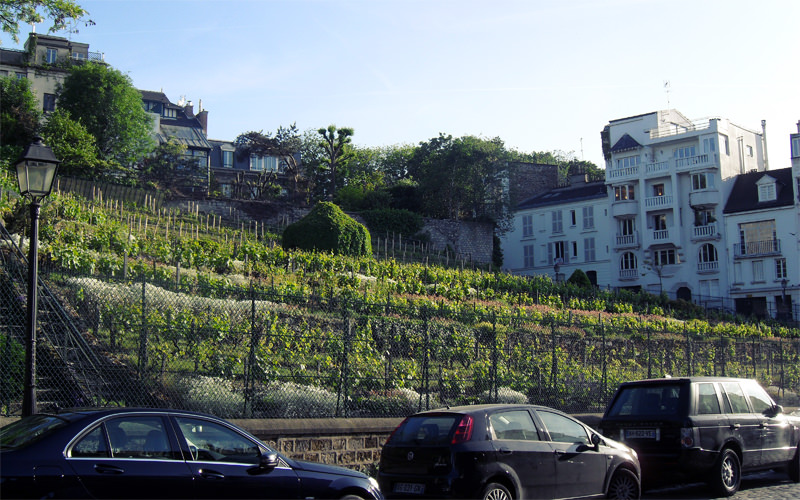
Mazzorbo Island, Venice – Venissa
Hidden among the many islands and archipelagoes dotting the Venetian Lagoon is the Venissa Vineyard. At the height of its power, Venice was home to countless vineyards, which supplied the Doges with their drink of a choice, Dorona, a golden-hued white wine. When a decade-long search turned up a few remaining Dorona vines, which were believed extinct, the Venetian government partnered with the Bisol family, prominent makers of Prosecco, to replant an abandoned vineyard on the island of Mazzorbo. The vineyard itself is part of a larger project, which includes a luxurious resort and an acclaimed restaurant. Mazzorbo, connected by wooden bridge to the wildly colored fisherman’s village of Burano, is prone to floods, as most Venitian islands are, creating just one more challenge for the winemakers. The winemakers claim the salty water (and air) helps create a uniquely Venetian terroir, while warding off diseases. The Venissa bottles, adorned with beautifully inlaid gold leaf, come from the famous glassworks on the nearby island of Murano.
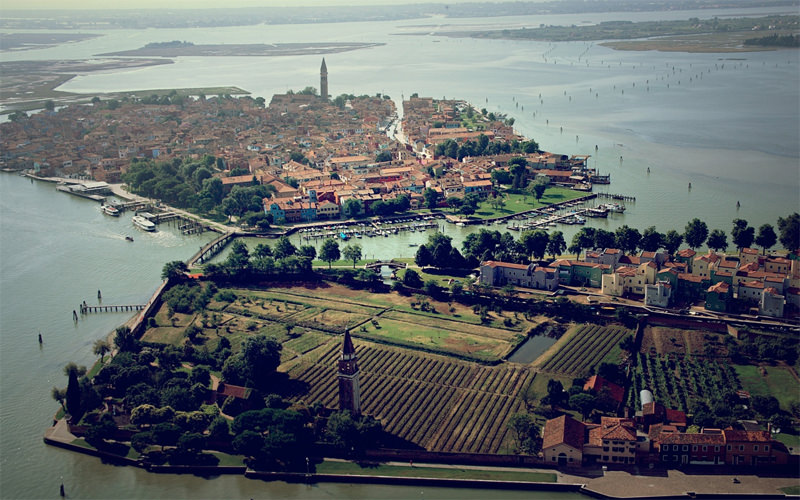
Enfield, London – Forty Hall Vineyard
Forty Hall Vineyard is the newest addition to Forty Hall Farm, a civic-minded project run by North Londoners to promote local, organic food. The vineyard’s first harvest, in 2013, was followed by a larger harvest this fall, which will be released in spring 2015. Some of those grapes from 2013 — Chardonnay, Pinot Noir and Pinot Meunier – have been aging ever since, and will be released as sparkling wine in 2015. Will Davenport, a winemaker who also runs his own (organic) Davenport Vineyards in Kent, leads the 7,000 vine project. Other planted varieties include Chardonnay, Ortega and Bacchus.
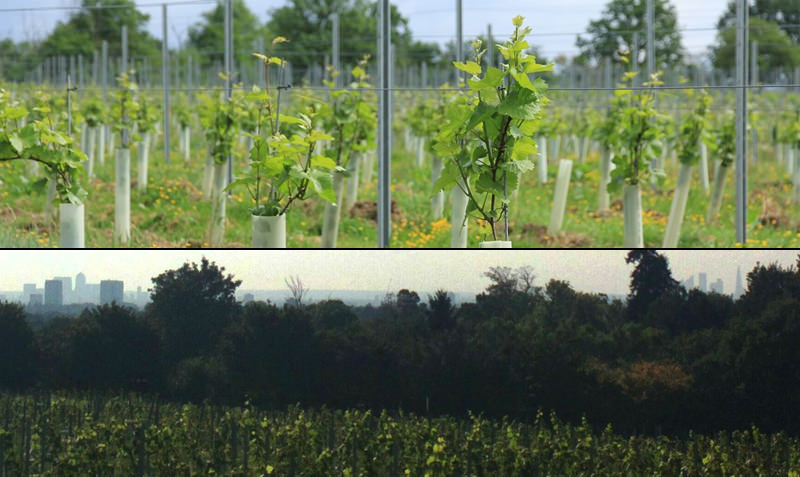
Queens, New York City – Queens County Farm Museum Winery
The Queens County Farm Museum’s Winery is part of New York City’s largest remaining tract of farmland (47 acres), a place where crops have been grown since 1697. The farm is in eastern Queens, just within New York City’s borders. The earliest vintage, a 2006 Cabernet Franc blend, has been followed up with Chardonnay, Cabernet Sauvignon and Merlot. While the Farm Museum is owned by the city government, the winegrowing operation is considered a true commercial vineyard, New York City’s only one. In a twist on the typical urban winery scenario, the grapes harvested at the Queens County Farm Museum are actually shipped out to Premium Wine Group’s large winery on Long Island’s North Fork for bottling.
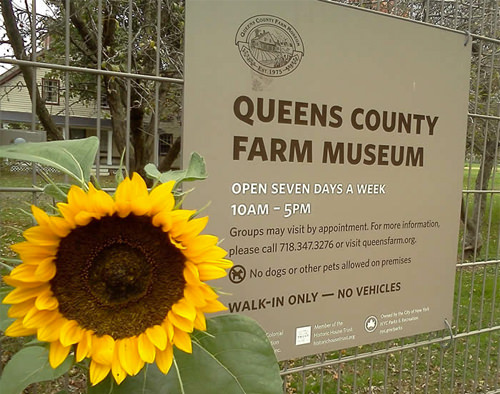
Echo Park, Los Angeles – D’Augustine Vineyard
This self-described ‘tiny vineyard’ (strictly non-commercial) in the heart of Los Angeles is planted over entirely with Syrah, which produce 500 pounds of grapes in a good year. It’s really a labor of love for its owners, Heather and Joe D’Augustine. While the vineyard seems out of place in Los Angeles’ endless urban sprawl, the city was home to countless vineyards in its early years, so you could say the D’Augustine’s are reviving a lost tradition. Adding to the difficulties that the typical urban vineyard faces, in 2009, the majority of their harvest was lost to water rationing and the smoke from the Station Fire, the largest of the wild fires that ravaged the state that year.
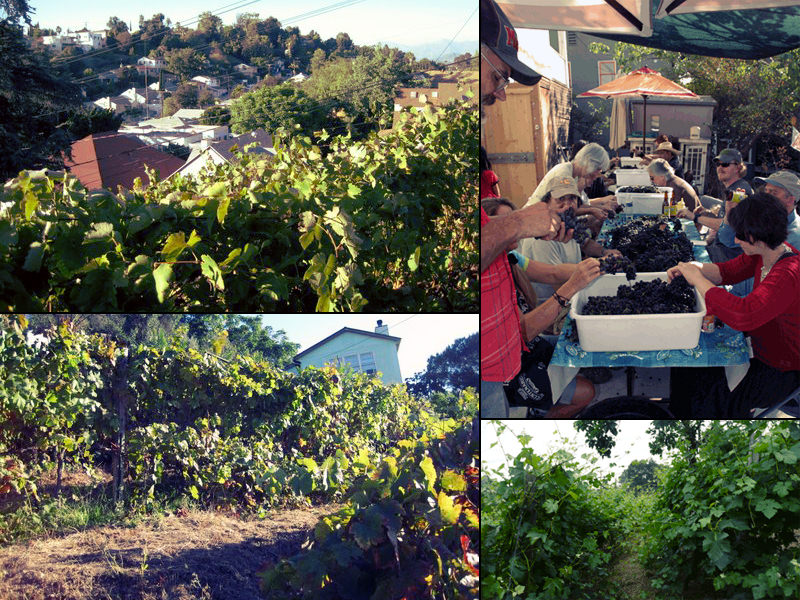
Thessaloniki, Greece
In 2013, the city of Thessaloniki partnered with Domaine Gerovassiliou (a renowned winery outside the city) and a local university to plant Greece’s first urban vineyard. The initial plan called for 480 vines, all native Greek varieties: white Robola and Malagousia and red Agiorgitiko and Xinomavro. The project is meant to be educational, with the hope that the wines will be auctioned off in order to benefit the local community. Photos from this year’s harvest reveal that things are already in full swing at the vineyard, which is located on a 2-acre field, nestled between apartment towers and Kaftanzoglio Stadium.
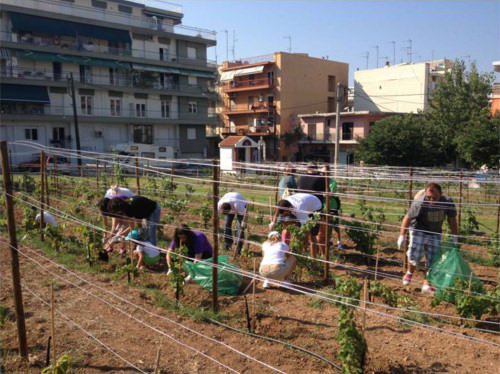
San Francisco, California – Neighborhood Vineyards Project
This list wouldn’t be complete without including California’s second largest urban area, San Francisco, and soon it will be. Winemakers Elly Hartshorn and Jenny Sargent planted 230 vines of Pinot Noir in their urban vineyard in 2013, and plan to release their first wine in 2016, the first to be grown in the city in over a century. Vineyards once ringed San Francisco, as in Los Angeles to the south. When the 1906 Earthquake torched the city, the vineyards were abandoned and many urban winemaking facilities were moved outside of the city. If you’d like to donate to the Neighborhood Vineyards Project, in true San Francisco fashion, they’re accepting (in lieu of time in the fields): “cash, bitcoins, Silicon Valley stock, celebrity IOU’s, your parents’ credit cards, giant commemorative checks and tax refunds.”
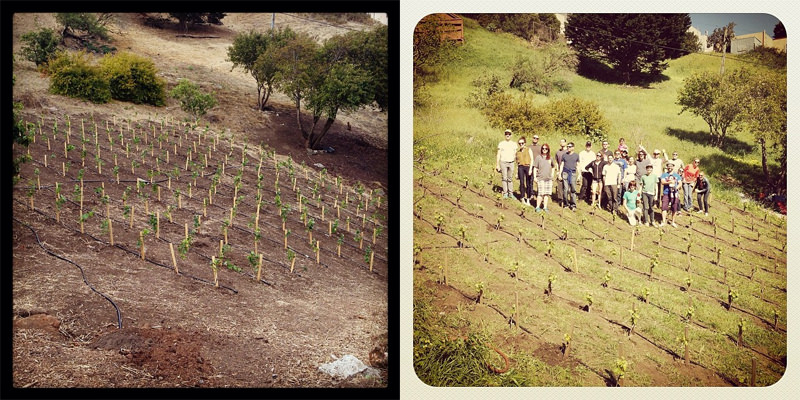
Bonus: Vienna – Hundreds of Vintners Working 1,700 Acres!
While this is a list of hidden urban vineyards, tucked away in unexpected places, we would be remiss not to mention Vienna. Austria’s capital is home to over 1,700 acres of vineyards, which are worked by over 600 different vintners, some large, some small. These are commercial vineyards, and the wines they produce preserve Vienna’s position as the last major European city with a thriving urban wine sector. The vineyards, a short metro ride from the city center, are worth visiting if you’re ever in Vienna – at least during the right time of year. Hundreds of the vineyards operate Heuriger – a special type of wine tavern, permitted by law since 1784, which are open for a few weeks at time. At a Heuriger, winemakers may sell their wines directly to customers, along with a limited selection of foods.

